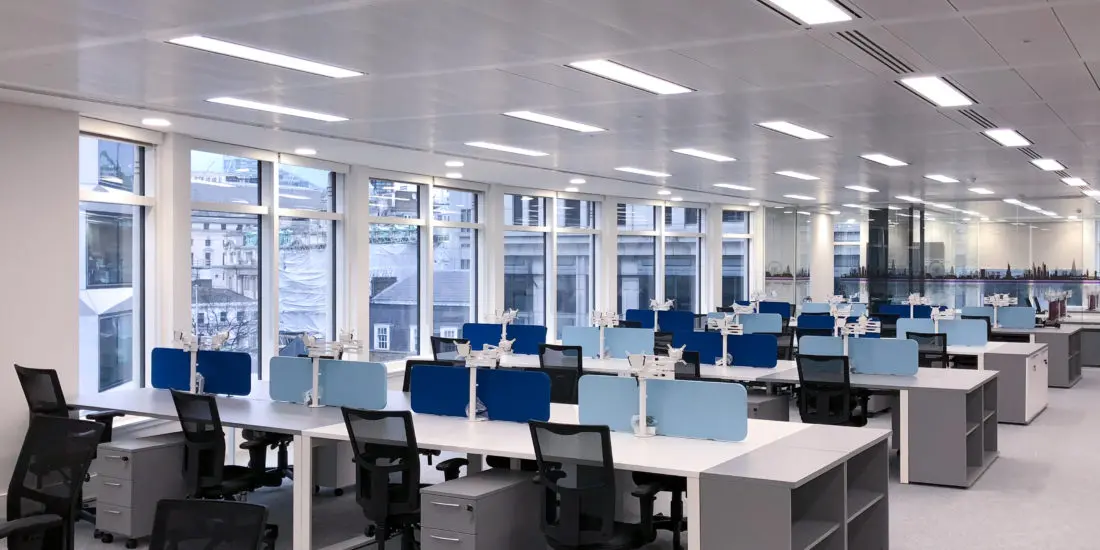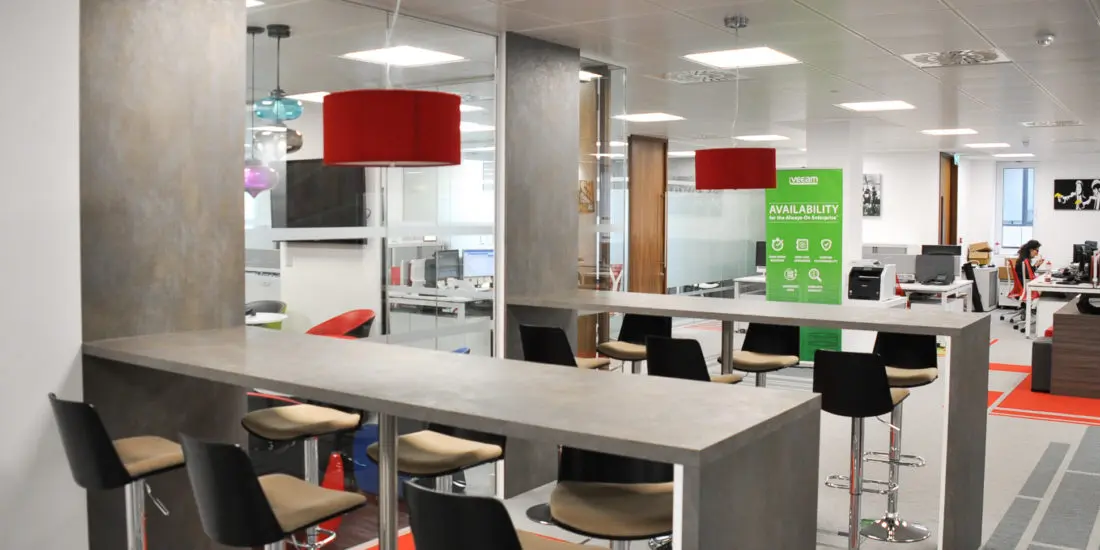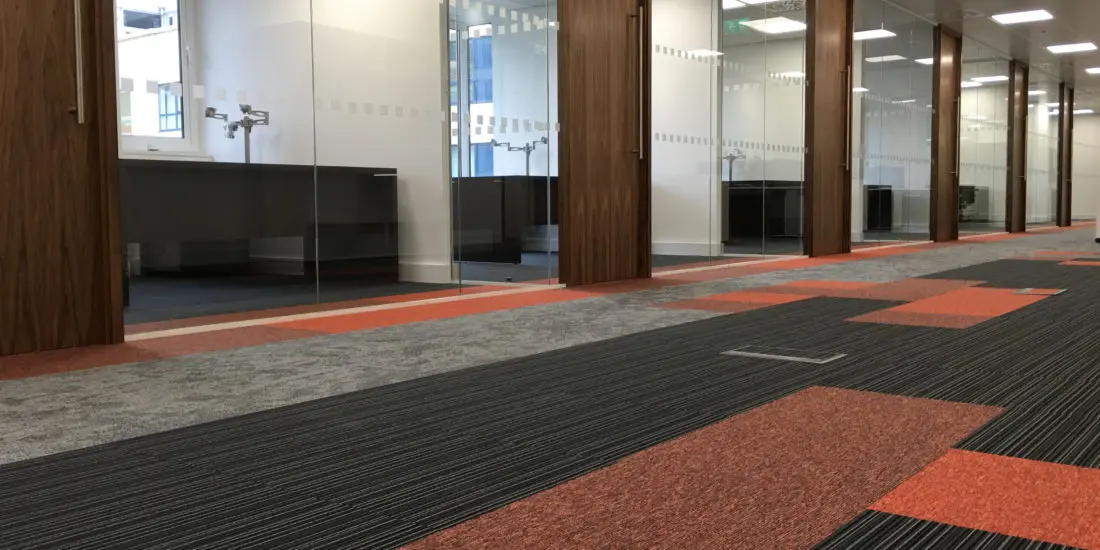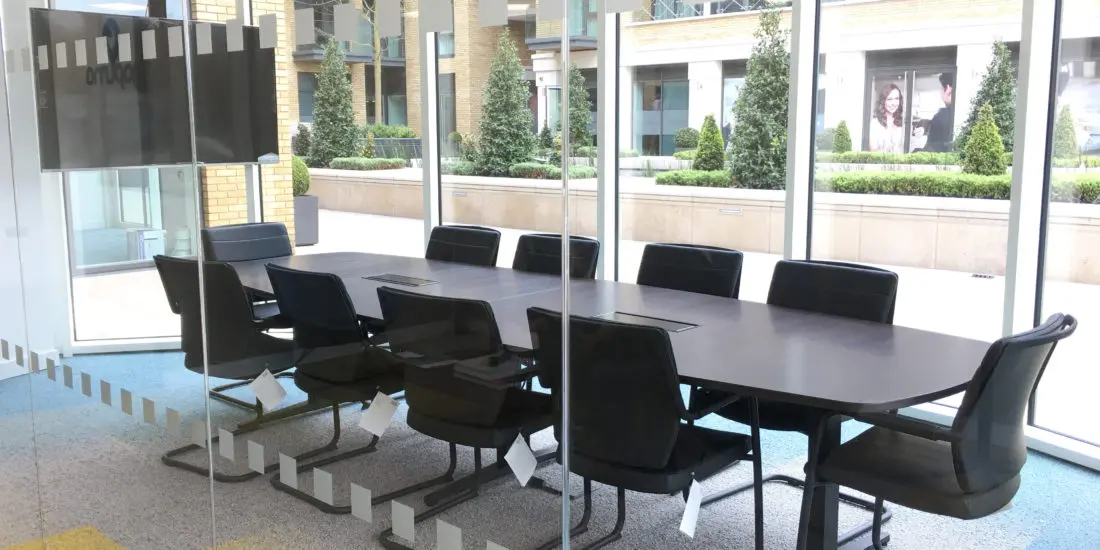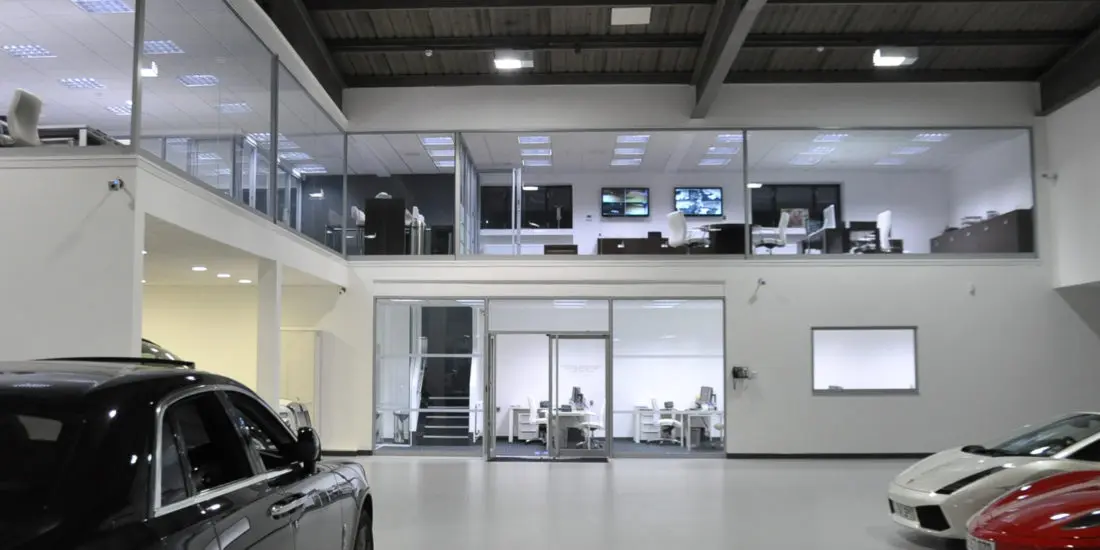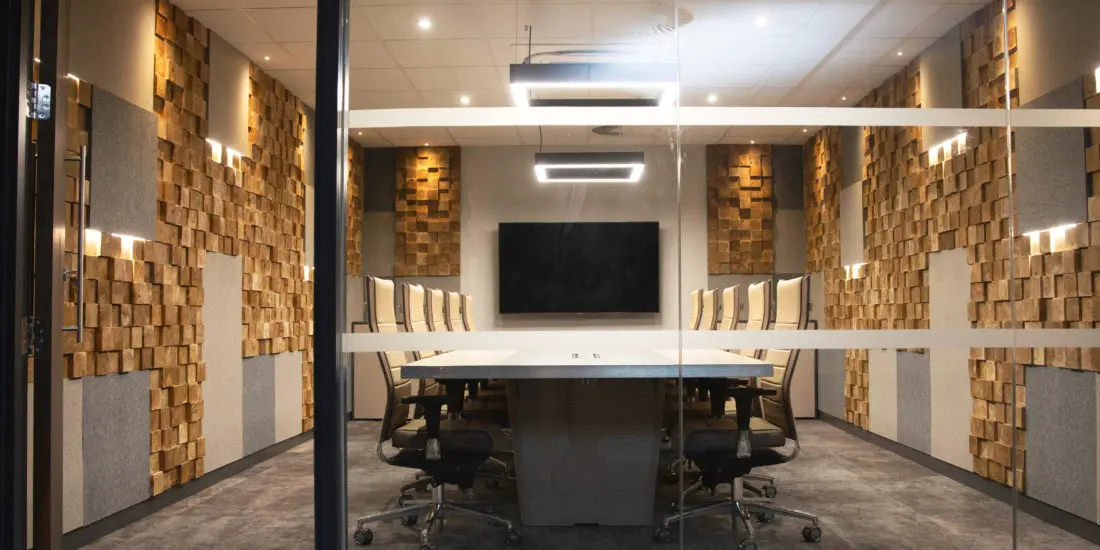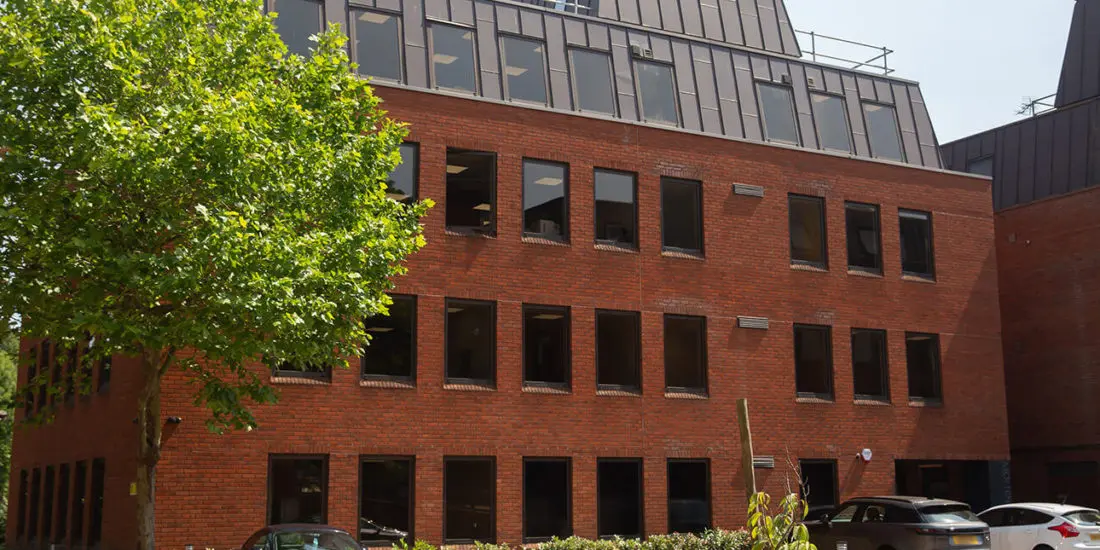FAQ
Understanding Aspects of Refurbishment

-
What do office refurbishments involve?
The extent of office refurbishment depends on the needs of a client. Occasionally, an office refurbishment may involve installing decorative elements such as wall decor, making internal partitions, making mechanical and electrical installations, as well as flooring and furniture.
-
Why conduct an office Refurbishment?
Some of the reasons for refurbishing an office include:
- Great first impression – Every business needs to make a great first impression when customers or clients come knocking. An office refurbishment can be aimed at improving workplace aesthetics.
- Improved communications – Due to technological advancements, offices need to accommodate current technologies for increased efficiency.
- Enhancing employee work experience – Modern business-space trends are aimed at making employees more comfortable for maximum productivity. An office may be refurbished to create a favourable working environment.
- Biophilic design- In the modern-day world, customers seek to conduct business with environment-conscious companies. As a continuing trend, business offices are being refurbished to give the office a natural environment texture.
-
Where can I get office refurbishment ideas?
There are plenty of design ideas available on social platforms such as Pinterest. Similarly, you can consult with a refurbishment consultant like GXI Group or check out furniture that would go well with your plan.
-
Who carries out an office refurbishment?
Office fit-outs and refurbishments are conducted by contractors, specialists, and the relevant tradesmen. Some contractors and design companies specialise in different aspects of renovation and refurbishment, while others engage in all features of a refurbishment. Design and build companies such as the GXI group engage in specialised as well as general refurbishment. The right contractor listens to your needs and issues suggestions before embarking on the actual refurbishment project.
-
Where do I source the furniture?
There are various companies specialising in the sale and supply of office furniture. For the best results, check out reputable sources such as Auraa Design for some of the best office furniture. You can also check out their catalogue for ideas.
The Planning Phase

-
I want to make my office layout plan. What areas should I prioritise?
When making a refurbishment plan it is important to first address the previous office’s shortcomings. However, if you want to have a fresh start, here are some of the areas you might need to check out for:
- The reception area
- Visitor’s waiting area
- Open plan area of various departments
- The manager’s office
- Meeting rooms
- Breakout areas and informal meeting zones
- Printing hubs
- Conference facilities
- Refreshment points
- Building service area
- Waste and recycling points
-
How long does a refurbishment project take from start to finish?
This depends entirely on the size of the project. However, in ordinary circumstances, the design, quoting, and approval phase takes about 2 weeks. Similarly, ordinary fit outs may take anywhere between 3 to 8 weeks while partitioning and final finish may take longer or lesser time.
-
Where do I start in case I need a new fit-out or refurbishment?
If you opt to work with a refurbishment company for the whole process, choosing them will be the first step. Companies such as the GXI group offer consultation whereby, after getting to know the business and its requirements, they present space plan and design exploring the different options. This ensures that the fit-out or refurbishment meets your needs and requirements functionally and aesthetically. After that, you are provided with a comprehensive cost assessment before signing off the work.
Project Pricing

-
How much does an office refurbishment cost?
This varies depending on what you want to be done. Having everything in one refurbishment package can significantly save you, time, money, and resources. If you chose to get everything from one contractor, you could also negotiate on the overall price.
-
Can there be any unexpected costs?
As with all building works, there can be some unexpected costs. These costs may arise due to a variety of factors such as a change in design or change in requirements. Furthermore, cost changes can also occur when a structural fault is identified during the undertaking of the project. However, in all cases, a good contractor/ refurbishment company like the GXI group will keep you updated on what is happening throughout the process.
-
Can I ask for accurate project duration and cost estimations?
Yes, this can be done. The contractor can bring in the relevant qualified surveyors and contract management and administration teams for an in-depth analysis. These teams can then give accurate and concise findings, recommendations, as well as quotations.
-
When working with a refurbishment company, do I have to pay for everything upfront?
No. Asking for 100% upfront payment is not an industry standard. Payment terms should be arranged to suit both project participants (contractor and customer). On many occasions, a good contractor will not ask for 100% upfront payment.
-
How do I go about getting a quotation for my work?
Often, all you need to do is send an inquiry to your refurbishment company of choice. After that, the company will follow up by sending a representative, who will assess the project and later on give detailed feedback.
-
What are the most common factors influencing the price of a refurbishment?
No project is the same as the other. Therefore the price of each project reflects the specific demands of the project. In order to get the cost of the project, the contractor may conduct a feasibility study, reports, or undergo remedial costs as per the guidance of the architects, developers and contractors. However, compared to developing a property, refurbishing it may be much cheaper in the long run. Factors influencing the price of the project are, scope and size of the project, whether it will be an empty space or will be occupied during works, existing condition of the office space, whether all the refurbishment work needs to be conducted in one go or is it a start – stop – start kind of a project.
Refurbishments Regulations

-
Are there building regulations for office refurbishments in the UK?
Yes, there are regulations depending on the size and extent of the refurbishments. These laws mainly revolve around risk assessment to workers and the office users during and after the refurbishments. For more guidelines and regulations, you can check out the HSE Website.
-
Do we need the landlord’s permission to do office refurbishments?
The answer is yes. You will need to seek the landlord’s permission before signing off the works or having the work commence. Typically, it is wise to consult with the landlord when the floor layout is approved. This way, the landlord knows about the overall changes to be put in place.
-
Will the office refurbishment project require building regulation approval?
In some cases, office refurbishment may require building regulation. In most cases, if the emergency door where people would run through is affected, then the building regulation approval is required. Your contractor may advise you accordingly. Similarly, on several occasions, the contractor may volunteer to deal with the building regulation application.
Working with a Refurbishment Company

-
How do I choose an office refurbishment company?
The key to identifying the right company is in the company’s track record. Companies that have good ratings and reviews often tend to do their best to retain a positive outlook. On many occasions, a good refurbishment company will listen to your needs, understand your needs and communicate. You should feel free to ask your company of choice questions on costs and potential risks. Similarly, you can review different companies before settling on one.
-
Which is the best season to start refurbishments on a property?
Professional companies can handle refurbishments in any weather. However, when working on the building exteriors, some weather conditions may be unfavourable. For clarification on this, consult your refurbishment company.
-
Our offices need small scale refurbishments such as door maintenance and carpeting, are there refurbishment companies that do that?
Yes. Nearly all refurbishment companies would be glad to do small, medium, and large scale refurbishment projects. There is no such thing as “too small” projects for many companies.
-
Can I hire a refurbishment company for a bespoke renovation project?
If you want to do a customised refurbishment according to your specific taste and instructions, you can. However, you may need to negotiate with the contractor prior, and have all directions scrutinised for practicality.
-
Do I need to have an office fit-out checklist?
Before exploring the options available, it is wise to have a refurbishment plan or fit-out checklist. A checklist helps one to focus on the main reasons for refurbishment. For instance, if the size or height of the desks prompted the change, then that should be made a priority. Various office checklist templates are available on the internet and are worth a try. Alternatively, many refurbishment companies can offer a checklist which might help in identifying the main point of focus.
-
Can a refurbishment company build an extension to the building?
Yes. Some refurbishment companies can build extensions, but you need to have the relevant planning and building permissions in place. Similarly, you may need to consult with the company before making the contract.
-
Can I hire an architect before altering the property structure? Can the architect go on to work with the refurbishment company I chose later on?
It is recommended that you get an architect before altering a property structure. However, after the architect gives guidance on how to go about it, he or she doesn’t need to continue working on the project. On the same note, while some refurbishment companies are capable of working with private architects, others might not be willing to do the same.
-
What sort of information do I need to offer for my project?
An excellent refurbishment company will most likely send a representative to assess the site to understand the task at hand. While some companies may charge for such consultations, other companies offer no-obligation site visits in order to provide the solution necessary.
-
What about health and safety during the refurbishments, who will manage that?
Reputable refurbishment companies like the GXI group often work with health and safety partners who assess the risk and issue of comprehensive risk assessments and methodologies for the entire work. Before choosing your contractor or refurbishment company, you should check its policy on this as it might vary from company to company.
-
Can I ask for property reports during the refurbishment process?
In most cases, professional companies will provide specialist property reports that highlight internal and external inspection findings, recommendations, quotations, and marked up work plans. If you might still need to be taken through the refurbishment process step by step, you can liaise with the designated refurbishing teams.
-
Can an office be refurbished without disrupting the day to day business activities?
Whether the refurbishment disrupts the day to day business activities depends on the contractor and the level of renovation. A contractor can work in different sections while employees work on others and then have the employees move to the renovated space. Similarly, a contractor can operate during out-of-hours to minimise the disruption of the business activities.
-
Who is supposed to take care of the repair waste?
Most contractors will take care of the waste from start to finish. However, this might not be the case in all circumstances. Before making the refurbishment contract, the issue can be added in the checklist of issues that need to be raised.
-
What is the difference between office refurbishment and an office fit-out?
Office refurbishment involves improving an existing working space. However, a fit-out involves developing a new space that is not occupied. On certain occasions, the term ‘office fit-out’ is used to describe the process of making interior spaces ready for occupation.
-
What is an office partitioning?
Office partitioning is the stylish division of office space to create sub-offices and other office sections such as kitchens, breakout areas, boardrooms and meeting rooms. Office partitioning helps to plan and divide an open floor plan space for various functions.
-
What happens when we leave the premises and need to take down our partitioning?
This depends on the arrangements made with the landlord. However, refurbishment companies can help in dismounting of the existing partitions and remounting them.
-
Can our company colours be used to create glass partitioning?
Yes, they can. But this is also subject to the company which you choose to do the partitioning. Often, the glass partitioning also comes with an aluminium partitioning framework that can have a finish of any colour. The finish is made using paint, wall coverings, vinyl, or suitable films that have company colours and logos.
-
During a refurbishment, can two rooms be combined to become a single room?
Yes. Refurbishments may involve combining rooms. However, this may necessitate the consultation of an architect if a wall is to be knocked down. In addition, the building regulation authority may need to be notified as well.


